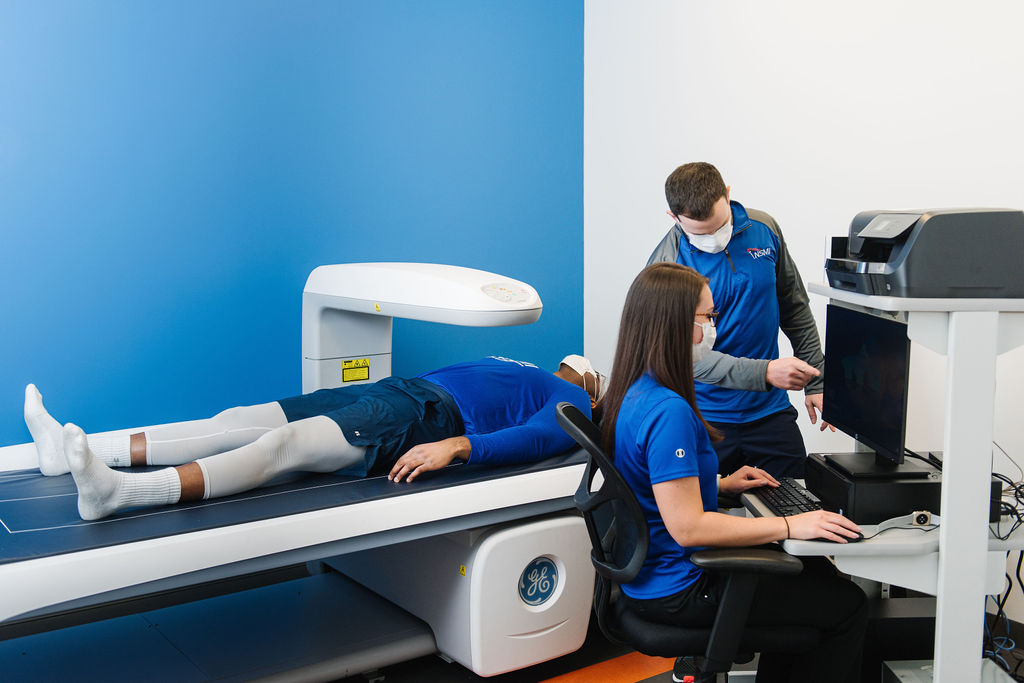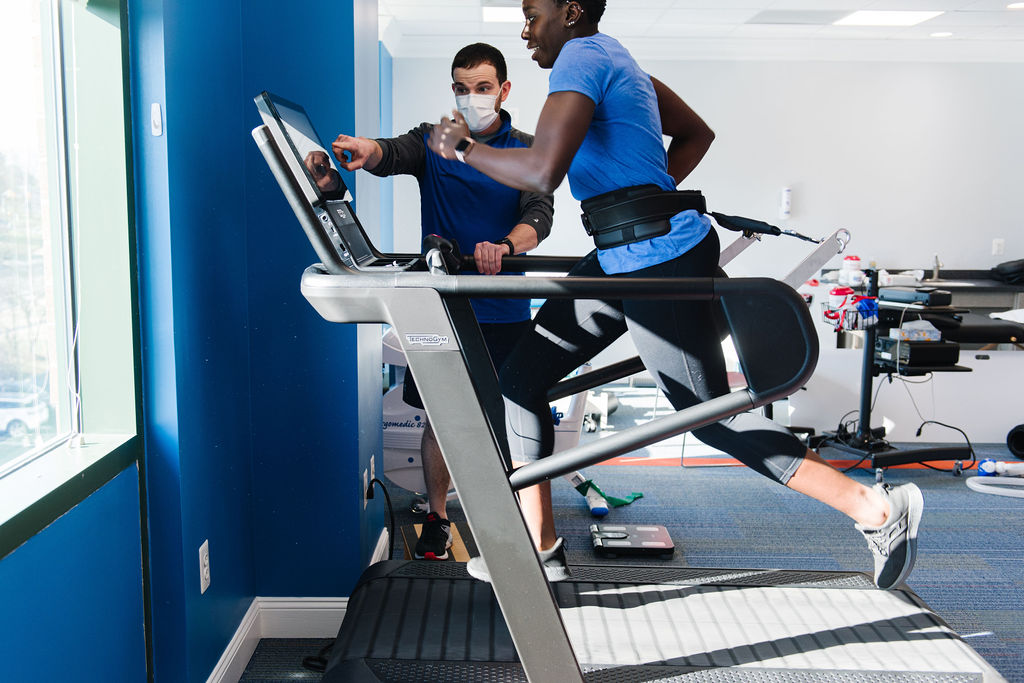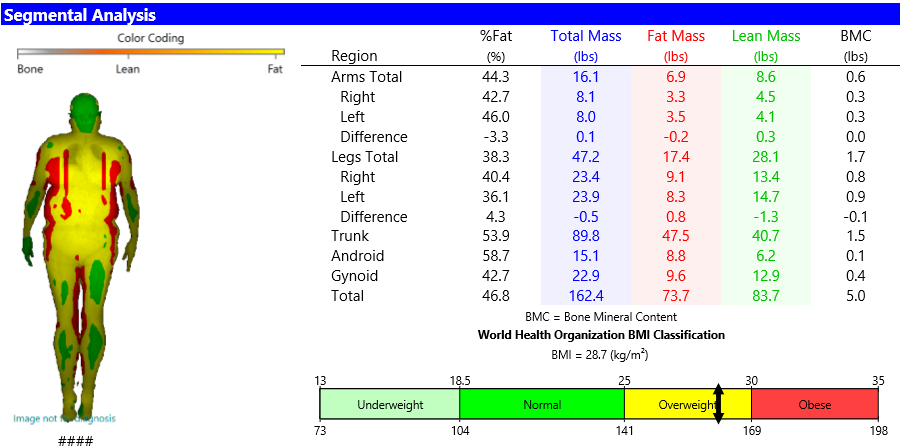Understanding Body Composition
Body Composition refers to the percentage of fat, lean muscle and bone mass in the human body. DXA stands for dual energy X-ray absorptiometry. The DXA Scan helps us to understand the body composition of our patients and athletes.
It allows us to understand how diet, lifestyle, and exercise programs can impact your overall health and human performance.
- Get feedback that helps you lose stubborn body fat, build more muscle, and optimize your health and fitness
- Map and pinpoint your muscle gains and fat loss in specific areas of the body
- Track your body’s specific physiological response to your diet or fitness plan
- Discover your bone health and risk for osteoporosis
- Identify personal long-term health risks, including diabetes, cardiovascular disease, hormonal imbalances, and more

Common alternative methods, such as BMI, Bioimpedance, Bod Pod, and hydrostatic weighing, are often used incorrectly as a surrogate for body composition health. Whereas as a DXA scan’s accuracy and precision ranges from a 1 to 2 percent margin of error, it also provides additional information that BMI and alternative testing methods cannot, including:
- Visceral Adipose Tissue (VAT), which is leading predictor of longevity, metabolic syndrome, and cardiovascular disease
- Skeletal strength, your risk for osteoporosis, and how you compare to others like you
- Muscle symmetry to identify how your lean, fat, and bone mass compares in each region of your body
- “Skinny fat” and sarcopenia risks, which has been found to be an important predictor of cognitive performance
DXA Speaks Louder than Scales
Sure your weight might be changing. But is it fat, muscle, or bone? DXA scan is the most trusted method you can use to find out.
Body Composition for Human Performance
Assessing Injury Prevention and Recovery
DXA scan can enhance individualized training programs for athletes. Today, university athletic programs are using the Athletic Profiles, to create customized training plans to ensure that athletes are in peak shape for their seasons. In addition to enhancing the health of the athlete, these tailored plans can also help reduce the risk of injury.
Data from scans can be useful to athletic programs, personal trainers, and coaches. The detailed information allows sports programs to review information about each athlete and provide guidance on how best to avoid future or repeat injuries before they happen.
The DXA scan can also play an important role in assisting symmetrical muscle developments for athletes of all sports. The data provides information on muscle mass and bone density for the entire body, which can be used to alter an athlete’s training program to gain more symmetry and ultimately prevent injury. Once training adjustments have been made, the DXA scan can continue to track progress.

Body Composition for Weightloss
Enhancing Nutritional Programs
The DXA scan can also be used to create personalized nutrition programs for patients and athletes to complement training and weight loss programs. Using the data, a nutritional strategy can be developed to prescribe certain intake of foods that will help patients or athletes meet their goals of weight loss, maintaining muscle, or gaining muscle. The initial scan can be used as a baseline, and performance can be tracked with additional scans throughout the duration of the training or weight loss program. Ultimately, data from the DXA scan provide a more accurate way to prescribe diet plans related to weight loss and athletic performance training.

Book a DXA Scan Appointment Today
Frequently Asked Questions
A DXA (Dual-Energy X-ray Absorptiometry) Scan measures bone, fat, and muscle in your body.
Doctors order DXA Scans for their patients to monitor bone density, particularly in the elderly. Low bone density tells a doctor that the patient is at risk of suffering bone fractures and that they may benefit from changes in diet and exercise.
People interested in their own health order a DXA Scan to get the most precise measure of their fat and muscle, and to see where it is distributed in their body. Using a DXA Scan lets a person see where they stand and chart their progress.
Wear something comfortable without metal to your DEXA Scan. Zippers, underwire bras, and belt buckles will need to be removed to avoid interfering with scan results.
Avoid taking any calcium supplements in the 24 hours prior to your exam.
A total body composition scan is a head-to-toe, fully clothed process. It’s a quick 5-10 minute process while you lay on your back; the total time depends on your height & weight.
Please plan to allocate 15-20 minutes for your total appointment time including your DXA total body composition scan.
Throughout the duration of a training and/or nutrition program, athletes need to know whether the weight they're gaining or losing is lean muscle or fat, and how balanced these changes are.
This is why obtaining a detailed analysis of your body composition, and not just a body fat percentage, is so important.
A DXA (Dexa) scan’s direct measurement of your body composition provides this data in a more accurate scope than other body composition methods.

